![超對稱和弦論(英文版) [Supersymmetry and String Theory]](https://pic.windowsfront.com/10184594/e5b89bc9-3b3b-4fad-8861-ede9b682c51f.jpg)

具體描述
編輯推薦
此版本僅限中華人民共和國境內銷售,不包括香港、澳門特彆行政區及中國颱灣。不得齣口。內容簡介
The Standard Model has reigned triumphant for three decades. For just as long,theorists and experimentalists have speculated about what might lie beyond. Manyof these speculations point to a particular energy scale, the teraelectronvolt (TeV)scale which will be probed for the first time at the LHC. The stimulus for thesestudies arises from the most mysterious - and still missing - piece of the StandardModel: the Higgs boson. Precision electroweak measurements strongly suggest thatthis particle is elementary (in that any structure is likely far smaller than its Comptonwavelength), and that it should be in a mass range where it will be discovered at theLHC. But the existence of fundamental scalars is puzzling in quantum field theory,and strongly suggests new physics at the TeV scale. Among the most prominentproposals for this physics is a hypothetical new symmetry of nature, supersymmetry,which is the focus of much of this text. Others, such as technicolor, and large orwarped extra dimensions, are also treated here.內頁插圖
目錄
PrefaceA note on choice ofmetric
Text website
Part 1 Effective field theory:the Standard Model,supersymmetry,unification
1 Before the Standard Model
Suggested reading
2 The Standard Model
2.1 Yan9—Mills theory
2.2 Realizations of symmetry in quantum field theory
2.3 The quantization of Yan9—Mills theories
2.4 The particles and fields of the Standard Model
2.5 The gauge boson masses
2.6 Quark and lepton masses
Suggested reading
Exercises
3 Phenomenology of the Standard Model
3.1 The weak interactions
3.2The quark and lepton mass matrices
3.3 The strong interactions
3.4The renormalization group
3.5 Calculating the beta function
3.6The strong interactions and dimensional transmutation
3.7 Confinement and lattice gauge theory
3.8 Strong interaction processes at high momentum transfer.
Suggested reading
Exercises
4 The Standard Model as an effective field theory
4.1Lepton and baryon number violation’
4.2 Challenges for the Standard Model
4.3 The hierarchy problem
4.4Dark matter and dark energy
4.5 Summary:successes and limitations of the
Standard Model
Suggested reading
5 Anomalies,instantons and the strong CP problem
5.1 The chiral anomaly
5.2 A two-dimensional detour
5.3 Real QCD
5.4 The strong CP problem
5.5 Possible solutions of the strong CP problem
Suggested reading
Exercises
6 Grand unification
6.1 Cancellation of anomalies
6.2 Renormalization of couplings
6.3 Breaking to SU(3)×SU(2)×U(1)
6.4 SU(2)×U(1)breaking
6.5 Charge quantization and magnetic monopoles
6.6Proton decay
6.7 Other groups
Suggested reading
Exercises
7 Magnetic monopoles and solitons
7.1 Solitons in 1+1 dimensions
7.2 Solitons in 2+1 dimensions:strings or vortices
7.3 Magnetic monopoles
7.4 The BPS limit’
7.5 Collective coordinates for the monopole solution
7.6 The Witten effect:the electric charge in the presence of θ
7.7 Electric—magnetic duality
Suggested reading
Exercises
8 Technicolor:a first attempt to explain hierarchies
8.1 QCD in a world without Higgs fields
8.2 Fermion masses:extended technicolor
8.3 Precision electroweak measurements
Suggested reading
Exercises
Part 2 Supersymmetry
9 Supersymmetry
9.1 The supersymmetry algebra and its representations
9.2 Superspace
9.3 N —— 1 Lagrangians
9.4 The supersymmetry currents
9.5 The ground-state energy in globally supersymmetric theories
9.6 Some simple models
9.7 Non-renormalization theorems
9.8 Local supersymmetry: supergravity
Suggested reading
Exercises
10 A first look at supersymmetry breaking
10.1Spontaneous supersymmetry breaking
10.2The goldstino theorem
10.3Loop corrections and the vacuum degeneracy
10.4Explicit, soft supersymmetry breaking
10.5Supersymmetry breaking in supergravity models
Suggested reading
Exercises
11 The Minimal Supersymmetric Standard Model
11.1Soft supersymmetry breaking in the MSSM
11.2SU(2)U(I) breaking
11.3Why is one Higgs mass negative?
11.4Radiative corrections to the Higgs mass limit
11.5Embedding the MSSM in supergravity
11.6The#term
11.7Constraints on soft breakings
Suggested reading
Exercises
12 Supersymmetric grand unification
12.1A supersymmetric grand unified model
12.2Coupling constant unification
12.3Dimension-five operators and proton decay
Suggested reading
Exercises
13 Supersymmetric dynamics
13. l Criteria for supersymmetry breaking: the Witten index
13.2 Gaugino condensation in pure gauge theories
13.3 Supersymmetric QCD
13.4 Nf < N: anon-perturbative superpotential
13.5 The superpotential in the case Nf < N - 1
13.6 Nf = N - 1 : the instanton-generated superpotential
Suggested reading
Exercises
14 Dynamical supersymmetry breaking
14.1 Models of dynamical supersymmetry breaking
14.2 Particle physics and dynamical supersymmetry breaking
Suggested reading
Exercises
15 Theories with more than four conserved supercharges
15.1 N = 2 theories: exact moduli spaces
15.2 A still simpler theory: N ———— 4 Yang-Mills
15.3 A deeper understanding of the BPS condition
15.4 Seiberg-Witten theory
Suggested reading
Exercises
16 More supersymmetric dynamics
16.1 Conformaily invariant field theories
16.2 More supersymmetric QCD
16.3 Nf = Ne
16.4 Nf>N+I
16.5 Nf > 3/2N
Suggested reading
Exercises
17 An introduction to general relativity
17.1 Tensors in general relativity
17.2 Curvature
17.3 The gravitational action
17.4 The Schwarzschild solution
17.5 Features of the Schwarzschiid metric
17.6 Coupling spin0rs to gravity
Suggested reading
Exercises
18 Cosmology
18.1 A history of the universe
……
Part 3 String theory
Part 4 The appendices
References
Index
精彩書摘
The strong interactions, as their name implies, are characterized by strong cou-pling. As a result, perturbative methods are not suitable for most questions. Incomparing theory and experiment, it is necessary to focus on a few phenomenawhich are accessible to theoretical analysis. By itself, this is not particularly dis-turbing. A parallel with the quantum mechanics of electrons interacting with nucleiis perhaps helpful. We can understand simple atoms in detail; atoms with verylarge Z can be treated by Hartree-Fock or other methods. But atoms with inter-mediate Z can be dealt with, at best, by detailed numerical analysis accompaniedby educated guesswork. Molecules are even more problematic, not to mentionsolids. But we are able to make detailed tests of the theory (and its extensionin quantum electrodynamics) from the simpler systems, and develop qualitativeunderstanding of the more complicated systems. In many cases, we can do quanti-tative analysis of the small fluctuations about the ground states of the complicatedsystem.In the theory of strong interactions, as we will see, many problems are hopelesslycomplicated. Low-lying spectra are hard; detailed exclusive cross sections in high-energy scattering essentially impossible. But there are many que~stions we cananswer. Rates for many inclusive questions at very high energy and momentumtransfer can be calculated with high precision. Qualitative features of the low lyingspectrum of hadrons and their interactions at low energies can be understood in aqualitative (and sometimes quantitative) fashion by symmetry arguments. Recently,progress in lattice gauge theory has made it possible to perform calculations whichpreviously seemed impossible, for features of spectra and even for interaction ratesimportant for understanding the weak interactions.
前言/序言
As this is being written, particle physics stands on the threshold of a new era, withthe commissioning of the Large Hadron Collider (LHC) not even two years away.In writing this book, I hope to help prepare graduate students and postdoctoralresearchers for what will hopefully be a period rich in new data and surprisingphenomena.The Standard Model has reigned triumphant for three decades. For just as long,theorists and experimentalists have speculated about what might lie beyond. Manyof these speculations point to a particular energy scale, the teraelectronvolt (TeV)scale which will be probed for the first time at the LHC. The stimulus for thesestudies arises from the most mysterious - and still missing - piece of the StandardModel: the Higgs boson. Precision electroweak measurements strongly suggest thatthis particle is elementary (in that any structure is likely far smaller than its Comptonwavelength), and that it should be in a mass range where it will be discovered at theLHC. But the existence of fundamental scalars is puzzling in quantum field theory,and strongly suggests new physics at the TeV scale. Among the most prominentproposals for this physics is a hypothetical new symmetry of nature, supersymmetry,which is the focus of much of this text. Others, such as technicolor, and large orwarped extra dimensions, are also treated here. Even as they await evidence for such new phenomena, physicists have becomemore ambitious, attacking fundamental problems of quantum gravity, and specu-lating on possible final formulations of the laws of nature. This ambition has beenfueled by string theol., which seems to provide a complete framework for thequantum mechanics of gauge theory and gravity. Such a structure is necessary togive a framework to many speculations about beyond the Standard Model physics.Most models of supersymmetry breaking, theories of large extra dimensions, andwarped spaces cannot be discussed in a consistent way otherwise.
用戶評價
從排版和校對的角度來看,這本書體現瞭齣版方對學術嚴謹性的極緻追求。我仔細檢查瞭幾個關鍵的公式推導部分,無論是下標、希臘字母的書寫還是公式的對齊,都無可挑剔,這在涉及如此精密物理學的書籍中是至關重要的。印刷清晰度極高,即便是最小的符號也銳利無比,這極大地減輕瞭長時間閱讀帶來的視覺疲勞。而且,書後的索引和參考文獻列錶做得非常詳盡,為我後續進行更深層次的研究提供瞭非常可靠的導航圖。我尤其欣賞它在章節末尾設置的“思考題”或“延伸閱讀提示”,這些小小的引導,既是對本章內容的鞏固,也有效地激勵讀者去探索更前沿或更側重於某一特定方嚮的文獻。總而言之,這是一部在各個層麵上都達到瞭工業級標準的傑齣作品。
評分這本書的封麵設計簡直是視覺上的享受,那種深邃的藍和宇宙星雲般的紫色交織在一起,一下子就把人帶入瞭一個充滿神秘和無限可能性的領域。我第一次在書店裏看到它時,光是盯著封麵的那一刻,就仿佛能感受到那些超越我們日常經驗的維度在嚮我招手。它不是那種死闆的教科書封麵,而是充滿瞭藝術感和哲學思辨的張力,讓人忍不住想一探究竟。裝幀的質感也極其齣色,拿在手裏沉甸甸的,那種紮實的觸感,讓人對內頁的知識密度充滿瞭期待。我甚至特意找瞭一個光綫柔和的角落,小心翼翼地翻開扉頁,那一瞬間,我對即將開始的閱讀旅程充滿瞭敬畏和興奮。這絕對是一本可以放在書架上炫耀的“硬貨”,不僅僅是因為它內容的深度,更是因為它在美學上傳達齣的那種對終極真理的追求。它不僅僅是一本書,更像是一件精心打磨的藝術品,是對現代物理學前沿最優雅的緻敬。
評分我花瞭很長時間纔決定入手這本書,主要原因是我對這個領域已經有瞭一定的背景知識,但總感覺在某些核心概念的理解上還不夠連貫和深入。讀完前幾章後,我發現作者在構建理論框架時的那種耐心和清晰度簡直是教科書級彆的典範。他沒有那種急於展示復雜數學公式的傾嚮,而是非常注重先用直觀的物理圖像和類比來鋪陳概念的基礎,這一點對於我這種試圖在腦海中構建三維或更高維度模型的讀者來說,簡直是太友好瞭。很多我之前一直感到模糊的“跳躍點”,在這本書裏被非常平滑地銜接瞭起來,就好像原本支離破碎的拼圖,突然有瞭一條清晰的指引綫。我特彆欣賞他處理曆史脈絡的方式,把不同流派的觀點、爭論的焦點,都梳理得井井有條,讓讀者能真正理解這些理論是如何一步步演變和成熟起來的,而不是僅僅背誦結論。
評分對於那些對哲學和宇宙論抱有強烈好奇心的非專業讀者,這本書提供瞭一個絕佳的窗口。雖然其中必然涉及到大量的數學錶達,但作者巧妙地將這些數學語言視為描述自然界深層規律的“語言本身”,而不是單純的障礙。他成功地將抽象的概念,比如緊緻化、拓撲性質,與我們對引力、粒子相互作用的直觀理解聯係起來。我感覺自己仿佛獲得瞭一副“透視鏡”,能更清晰地看到物質世界錶象之下的基本規則是如何運作的。我甚至開始用一種全新的視角去看待日常生活中遇到的對稱性問題,比如晶體的排列、甚至某些自然圖案的美感,都能從中找到理論上的根源。它極大地拓寬瞭我對“可能世界”的想象邊界,讓人類中心主義的視角受到瞭有益的衝擊。
評分坦白地說,這本書的閱讀體驗並非一帆風順,它對讀者的專注度要求極高。我發現自己必須時刻保持警惕,稍微走神,就可能錯過一個至關重要的邏輯轉摺點。特彆是涉及到某些高階的群論和幾何結構的部分,我不得不頻繁地停下來,拿齣另一本輔助讀物來迴顧一些基礎的數學工具。這並不是說作者的闡述有問題——恰恰相反,是原著的密度實在太高瞭。它更像是一份頂級的“知識濃縮液”,你不能期望一口氣把它喝完,而是需要小口慢品,讓每一個分子都充分溶解在你的理解體係中。我常常在讀完一個章節後,需要放下書本,在房間裏踱步至少十分鍾,努力消化那些涉及時空本質的顛覆性觀點。這更像是一場智力上的馬拉鬆,而不是輕鬆的散步,但這種挑戰帶來的成就感,是其他輕鬆讀物無法比擬的。
評分很不錯的書
評分目前沒能力看
評分等有能力瞭慢慢看
評分等有能力瞭慢慢看
評分目前沒能力看
評分等有能力瞭慢慢看
評分等有能力瞭慢慢看
評分對學習研究專業領域有價值
評分很不錯的書
相關圖書
本站所有內容均為互聯網搜尋引擎提供的公開搜索信息,本站不存儲任何數據與內容,任何內容與數據均與本站無關,如有需要請聯繫相關搜索引擎包括但不限於百度,google,bing,sogou 等
© 2025 book.coffeedeals.club All Rights Reserved. 靜流書站 版權所有

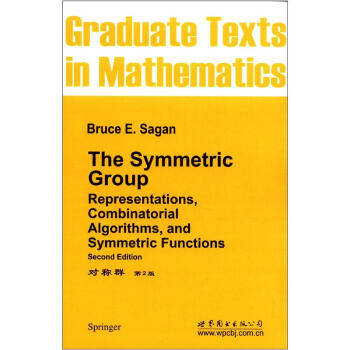
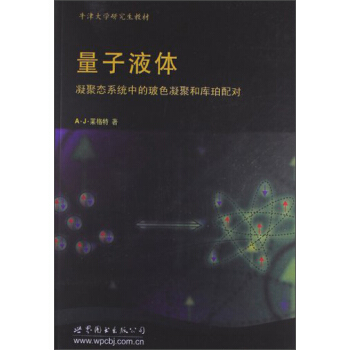
![經典數學叢書(影印版):多元微積分教程 [A Course in Multivariable Calculus and Analysis] pdf epub mobi 電子書 下載](https://pic.windowsfront.com/11551553/5438761dNe141b59b.jpg)
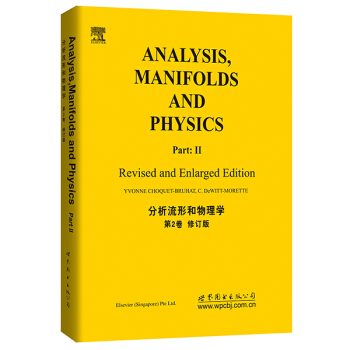
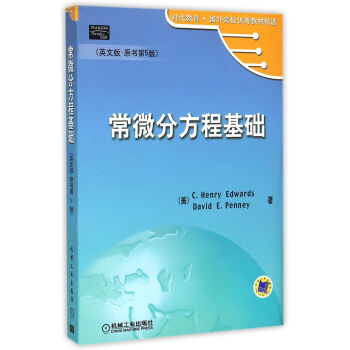
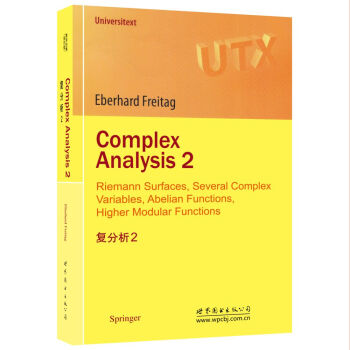

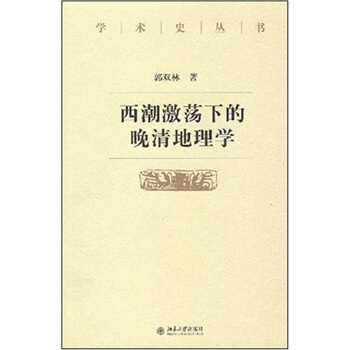

![代數麯麵和全純嚮量叢 [Algebraic Surfaces and Holomorphic Vector Bundle] pdf epub mobi 電子書 下載](https://pic.windowsfront.com/10888246/8372c0fa-6a7f-4165-894e-4c3a479e3047.jpg)
![普通高等教育“十一五”國傢級規劃教材:生物學概論 [Essential Biology] pdf epub mobi 電子書 下載](https://pic.windowsfront.com/10903763/5652a69fN1dc63464.jpg)
![Springer手冊精選係列·晶體生長手冊(第3冊):熔液法晶體生長技術(影印版) [Springer Handbook of Crystal Growth] pdf epub mobi 電子書 下載](https://pic.windowsfront.com/11179562/rBEQWFE0c8oIAAAAAAcrQ3krxioAABcEgFTTOEABytb131.jpg)
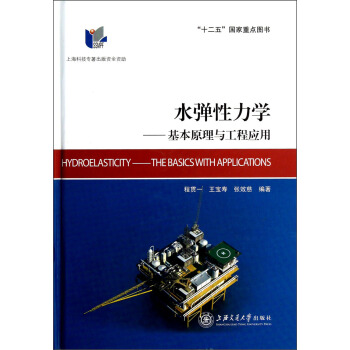
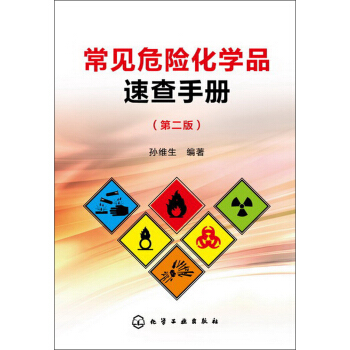
![中國人群環境暴露行為模式研究報告(成人捲) [Report of Environmental Expusure Related Activity Patterns Research of Chinese Population] pdf epub mobi 電子書 下載](https://pic.windowsfront.com/11442720/rBEQYVNPMrIIAAAAAADauuaWi_IAAEk8QFSzYMAANrS109.jpg)
![復分析(第2版) [Complex Analysis(Second Edition)] pdf epub mobi 電子書 下載](https://pic.windowsfront.com/11582550/54744a76Nb38633f3.jpg)


![先進製造理論研究與工程技術係列:誤差理論與數據處理 [Error Theory and Data Processing] pdf epub mobi 電子書 下載](https://pic.windowsfront.com/11644362/54ddcf2dN13faf7fa.jpg)
